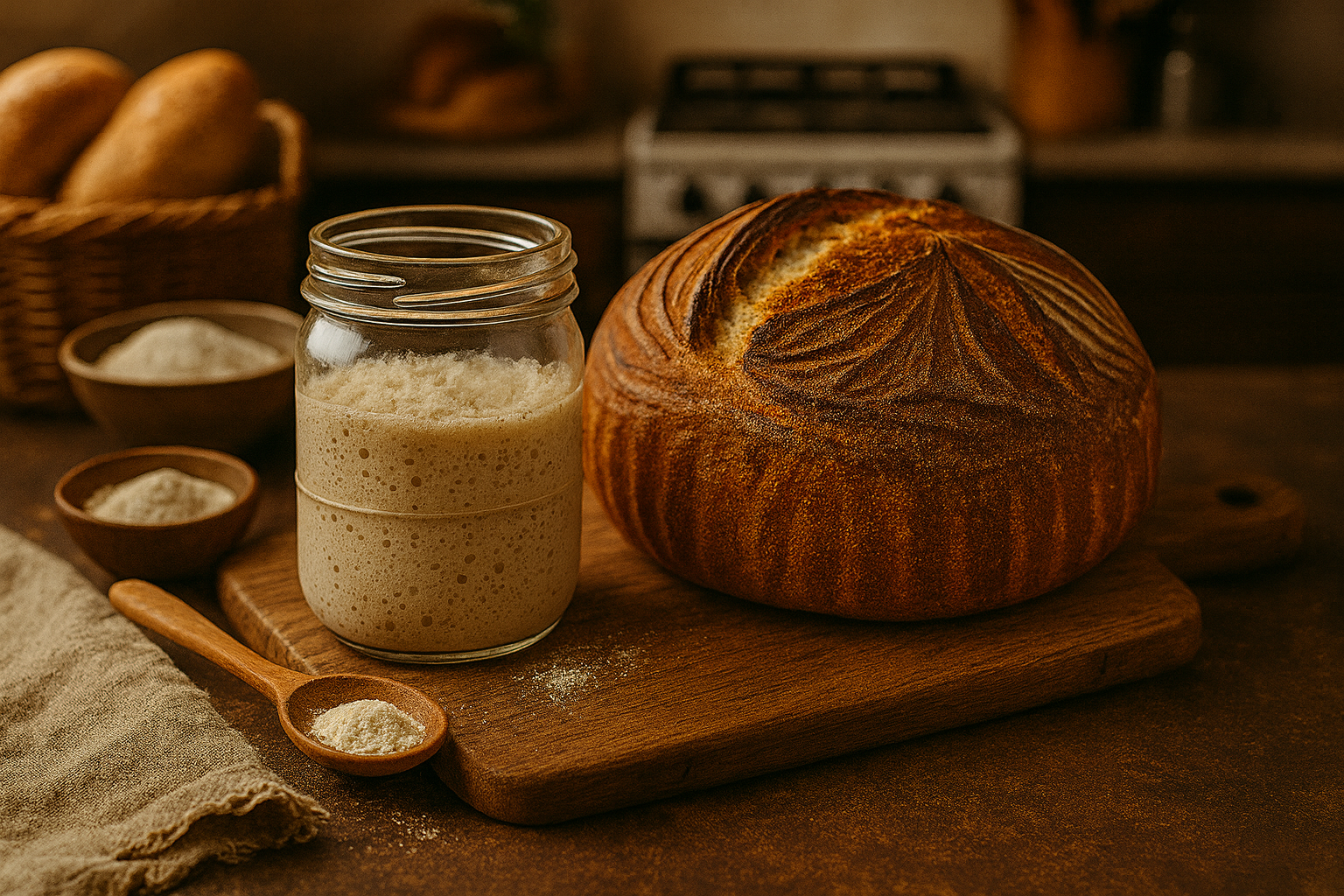Table of Contents
Introduction to Street Food Culture in the USA
The street food culture in the United States is a reflection of the country’s rich culinary tapestry, shaped by its diverse population and regional traditions. The origins of street food in America can be traced back to the late 19th and early 20th centuries, when immigrants introduced their traditional dishes at fairs, markets, and roadside stands. These food offerings, often prepared with care and attention to cultural authenticity, laid the foundation for what has now evolved into a flourishing street food scene.
Over the decades, street food has experienced an evolution that mirrors changes in American society. The 1960s and 1970s saw a burgeoning interest in food trucks and outdoor markets, which catered to the growing demand for affordable and accessible cuisine. This trend continued to gain momentum, especially in urban areas, where food trucks and pop-up vendors began to pop up, offering everything from gourmet tacos to artisan burgers. The rise of social media further fueled this phenomenon, enabling chefs and food entrepreneurs to showcase their dishes, build a following, and create an instant connection with food enthusiasts.

Today, street food in the USA is not only a means of sustenance but also an expression of local identity and creativity. Each region offers its unique specialties, influenced by its history, geography, and cultural traditions. From New Orleans’ beignets to Los Angeles’ Korean BBQ tacos, street food showcases the myriad flavors and culinary constructs that represent the melting pot of American society. This vibrant street food culture has transformed into a shared experience, enticing locals and tourists alike to explore the wide-ranging options available on bustling streets, festivals, and food truck gatherings.
Top Cities for Street Food Lovers
When exploring the vibrant street food scene across the United States, several cities stand out due to their culinary diversity and unique offerings. Among these, Los Angeles, New York City, and Chicago are renowned for their remarkable street food cultures, making them must-visit destinations for any food enthusiast.
Los Angeles is a melting pot of cultures, reflected in its diverse street food options. The city is famous for its taco trucks, particularly those serving authentic Mexican street tacos. Visitors can indulge in carne asada, al pastor, and fish tacos, often accompanied by fresh salsas and toppings. Additionally, the city’s food markets, like Grand Central Market, offer a variety of international cuisines, including Venezuelan arepas and Filipino lumpia, showcasing LA’s eclectic food landscape.
Moving to the East Coast, New York City presents a fascinating street food experience shaped by its fast-paced lifestyle and multicultural vibe. Street carts and food trucks are ubiquitous, serving everything from iconic NYC pretzels and hot dogs to gourmet offerings like lobster rolls and falafel. The diverse neighborhoods each bring their own flavor to the street food scene, with areas like Astoria offering Greek gyro stands and Jackson Heights showcasing Indian chaats. This variety ensures that there is something for everyone, making NYC a top choice for street food lovers.
Chicago, often celebrated for its deep-dish pizza, also boasts an impressive street food reputation. The city’s food trucks are known for serving dishes that highlight local favorites, such as Chicago-style hot dogs and Italian beef sandwiches. Festivals throughout the year, like the Chicago Food Truck Festival, spotlight a range of cuisines and food trends, allowing visitors to explore the rich culinary offerings available in this vibrant city. Each of these cities contributes uniquely to the American street food landscape, ensuring that food lovers will find an abundance of flavors and experiences to savor.
Northeast
The Northeast is renowned for its vibrant street food scene, reflecting the region’s rich history and diverse cultures. A must-try dish is the iconic lobster roll, particularly in Maine, where fresh lobster meat is served in a buttered bun. This delicacy showcases the region’s bountiful seafood resources and is a staple at local food festivals.
Southeast
Moving southward, the Southeast offers a unique blend of flavors and ingredients. Here, one can find shrimp and grits, a dish deeply rooted in Southern tradition. Typically made with succulent shrimp sautéed with spices and served over creamy grits, this culinary delight emphasizes the importance of local seafood and agricultural products, making it a quintessential street food offering in cities like Charleston.
Midwest
The Midwest presents its own distinct street food experiences, such as the Chicago deep-dish pizza. Unlike traditional pizzas, this version features a thick crust filled with layers of cheese, toppings, and a rich tomato sauce. This dish not only symbolizes the local love for hearty meals but also represents the region’s Italian-American heritage, making it a popular choice for both locals and visitors.
Southwest
The Southwest is famous for its bold flavors, largely influenced by Hispanic and Native American cultures. Tacos, especially fish tacos from California and carne asada tacos from Texas, are quintessential street foods that have gained immense popularity. Tacos highlight the region’s fresh ingredients, such as cilantro, lime, and locally sourced meats, reflecting the vibrant culinary traditions of the Southwest.
West Coast
Finally, the West Coast embodies a diverse street food culture, with dishes such as the famous Kogi BBQ taco from Los Angeles. This fusion of Korean and Mexican flavors showcases innovative culinary practices and reflects the melting pot that is California’s food scene. With its emphasis on fresh, local ingredients, the West Coast street food experience highlights the region’s commitment to sustainability while enticing food lovers from around the globe.
Iconic Street Food Dishes Not to Miss
Street food in the United States offers a vibrant tapestry of flavors, each with its own unique story and cultural background. One of the most renowned dishes is the Chicago-style hot dog, a true representation of the Windy City. This dish features an all-beef frankfurter nestled in a poppy seed bun, topped with mustard, sweet pickle relish, onions, tomato slices, a dill pickle spear, and sport peppers, all without the inclusion of ketchup. Popular spots such as Portillo’s and Superdawg are exceptional places to experience this culinary delight.
Another iconic street food dish is the New Orleans po’ boy, which originated from the city’s working-class roots. Typically served on a French baguette, this sandwich can be filled with various ingredients, including shrimp, oysters, or roast beef, all complemented by lettuce, tomato, and a signature remoulade sauce. For a truly authentic experience, locals recommend establishments like Johnny’s Po-Boys or Parkway Bakery and Tavern.
The Philadelphia cheesesteak is also a quintessential American street food that demands attention. Consisting of thinly sliced ribeye beef, melted cheese (often Cheez Whiz or provolone), and sautéed onions on a hoagie roll, this hearty dish has become a symbol of the city. Steve’s Prince of Steaks and Pat’s King of Steaks are famous destinations for those looking to savor this sandwich. Each of these iconic street food dishes not only satisfies the palate but also connects consumers with the rich culinary heritage of their respective locales.
Exploring these noteworthy street foods not only enhances taste preferences but also offers a deeper understanding of the regional cultures that birthed these beloved creations. Embrace these dishes as you traverse through the streets of the USA.
The Rise of Gourmet Street Food
In recent years, gourmet street food has experienced a remarkable rise, transforming the traditional street food landscape into a vibrant culinary scene. This trend signifies a shift from simple, often greasy offerings toward a more sophisticated approach that emphasizes high-quality ingredients, innovative culinary techniques, and artistic presentation. The fusion of various culinary traditions has led to the emergence of exciting new flavors and dishes, attracting food enthusiasts and casual diners alike.
Food trucks and stands have become dynamic platforms for chefs and food artisans to experiment with their culinary creativity. The use of local and seasonal ingredients has not only enhanced the flavor profile of street food but also supported local economies and sustainable practices. Chefs often combine global cuisines, leading to unique creations such as Korean BBQ tacos or gourmet sliders topped with an array of international sauces and garnishes. This melding of flavors invites diners to embark on a culinary adventure, elevating street food from mere convenience to a beloved gastronomic experience.
Numerous food trucks across the United States have successfully embraced this gourmet trend, turning simple meals into gourmet delights. For example, culinary innovators in cities like Los Angeles and New York City have gained notable acclaim for their artisanal offerings. These gourmet food trucks often focus on signature dishes that showcase their unique style and highlight stellar customer service. Their success has not only contributed to the popularity of gourmet street food but has also inspired aspiring chefs to explore this vibrant avenue of culinary expression.
The ascent of gourmet street food reflects a broader cultural appreciation for quality and tastiness in everyday dining experiences. With a commitment to creativity and excellence, this evolving food scene is redefining what street food can be, promising remarkable flavors and unforgettable dining experiences that are not to be missed.
Food Festivals Celebrating Street Food
Across the United States, food festivals dedicated to street food offer an exciting glimpse into the diverse culinary landscape of the nation. These festivals not only celebrate traditional street cuisine but also provide an opportunity for local vendors to showcase their unique flavors. For those interested in exploring the best street food, attending these festivals is highly recommended.
One of the most prominent events is the L.A. Street Food Fest, held annually in Los Angeles, California. This festival typically features an array of local food trucks and street vendors, presenting a mix of international and local fare. Attendees can savor dishes ranging from gourmet tacos to artisanal desserts, all in a vibrant atmosphere. In addition to tasting, the festival often hosts cooking demonstrations from renowned chefs, offering insights into the techniques behind popular street food recipes.
Another notable festival is the New York City Street Food Festival, which showcases the city’s incredible street food scene. Held in various locations across the city, this festival brings together over 100 vendors, providing an opportunity to sample everything from classic slices of pizza to innovative fusion dishes. Visitors can also participate in interactive tastings and food-themed activities, making it a fun experience for food enthusiasts and families alike.
In Chicago, the Chicago Gourmet festival prominently features street food vendors. This culinary event allows attendees to explore the city’s rich tapestry of tastes while indulging in street eats from both established and up-and-coming chefs. The event also includes demonstrations, wine pairings, and a series of workshops, ensuring an engaging experience for everyone.
Overall, food festivals celebrating street food offer a remarkable way to experience the culinary delights of the U.S. They provide an environment where food lovers can learn about and appreciate the craftsmanship behind street food, making these events not just about eating, but about celebrating a vital part of American culture.
Health and Safety in Street Food
Street food has become a cornerstone of culinary exploration in many cities across the USA. However, while indulging in these delightful offerings, it is crucial to prioritize health and safety. Understanding certain practices and tips can help food lovers enjoy street cuisine without compromising their well-being.
Firstly, it is vital to choose vendors that demonstrate good hygiene practices. Look for food stalls that maintain cleanliness, such as regularly cleaning their cooking equipment and serving areas. Observing the vendor’s personal hygiene is equally important; they should wear gloves and clean uniforms while preparing food. Take note of how foods are stored; items should be displayed in a manner that protects them from contaminants.
Another indication of a reputable street food vendor is the presence of a Food Safety Rating or health department permit prominently displayed. This certification is often provided after inspections ensure the vendor adheres to food safety regulations. Vendors with a higher rating typically maintain better hygiene standards. Furthermore, busy food stalls with long lines can often be a sign that the food is not only tasty but also safe, as high turnover rates may imply freshness.
Before making a purchase, observe the cooking process if possible. Vendors who cook food in front of customers and use fresh, hot ingredients are generally safer choices. Avoiding food that has been sitting out for extended periods minimizes the risk of foodborne illnesses. Additionally, be cautious with raw items, such as undercooked meats or unwashed vegetables, as these can harbor harmful bacteria.
In summary, being vigilant while enjoying street food can lead to a safe and enjoyable dining experience. By selecting reputable vendors and observing local food safety practices, food enthusiasts can savor the enticing offerings available on the streets of the USA without compromising their health.
Local Stories Behind the Vendors
Street food vendors are often the heartbeat of urban culinary scenes, each with a unique story that reflects their heritage, struggles, and triumphs. These vendors not only serve delicious meals but also embody the rich culture and community spirit of their neighborhoods. One such vendor is Maria Gonzalez, who runs a taco stand in Los Angeles. Maria immigrated from Mexico at a young age, bringing with her family recipes that have been passed down through generations. Her vibrant stand, adorned with colorful decorations, attracts a diverse clientele, eager to taste her authentic tacos. For Maria, serving food is more than just a business; it’s a way to celebrate her culture and share her love for traditional Mexican cuisine with her community.
Another remarkable story is that of Jamal Wright, a food truck owner in New Orleans. Jamal’s journey began after the devastating effects of Hurricane Katrina when he lost his home and job. With determination and culinary skills honed over years of cooking for his family, he converted an old bus into a mobile kitchen. Jamal’s food truck, specializing in Creole and Cajun dishes, quickly became a local favorite. He sees his food as a way to uplift his community and preserve the rich culinary traditions of New Orleans. Jamal’s story underscores the resilience of street food vendors who often rise from adversity to create platforms of engagement and cultural pride.
Similarly, in New York City, we meet Abdi Mohammed, a Somali street food vendor who serves tantalizing dishes such as sambusas and spicy beef stew. His journey mirrors the immigrant experience, as he arrived in the U.S. seeking better opportunities. Through his food, Abdi shares a piece of his homeland with the busy streets of Manhattan. His stand not only provides sustenance but also fosters understanding and appreciation among diverse cultures. Each of these vendors enriches the street food landscape, making it not just about the food but about the experiences, stories, and communities that come alive through every meal they serve.
Conclusion: Embrace the Street Food Adventure
As we draw our exploration of the best street food in the USA to a close, it is evident that this vibrant culinary landscape offers an array of flavors and experiences that are both enticing and enriching. Each dish discussed in this blog post serves not only as a meal but as a narrative that reflects the culture and creativity of the communities from which they originate. From the sizzling tacos and warm churros of bustling urban markets to the savory hot dogs and golden funnel cakes found at state fairs, street food invites you to broaden your palate and embark on a gustatory journey.

We encourage you to embrace this adventure by stepping out of your culinary comfort zones. Be it a food truck around the corner or a bustling festival, there awaits an assortment of regional specialties that are often prepared using unique techniques and seasonal ingredients. The excitement lies in discovering hidden gems in local neighborhoods and major cities alike, where you can savor dishes highlighting the diversity of American street food culture.
Moreover, the act of sharing these delicious morsels with friends or family enhances the experience, allowing for conversations about flavor profiles and personal preferences. It’s an invitation to connect not just with the food, but with the community that makes it special. Whether you’re traveling to new destinations or exploring your own city, the journey into street food promises memorable moments and delectable bites. To truly appreciate the essence of this culinary adventure, we urge you to get out there and taste everything that street food has to offer. Your next favorite dish may be just a vendor away!





Your positivity and optimism are contagious It’s impossible to read your blog without feeling uplifted and inspired Keep up the amazing work